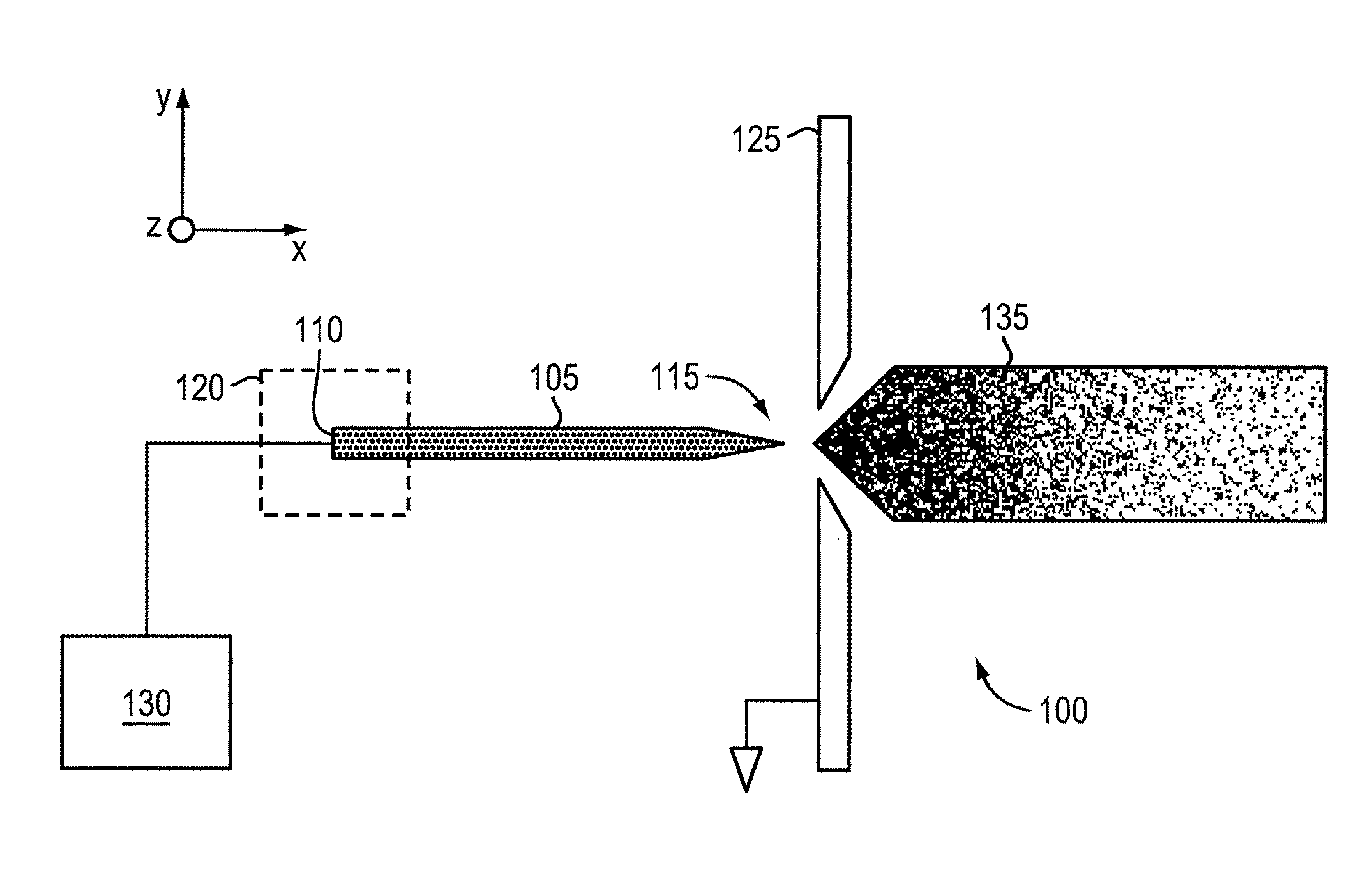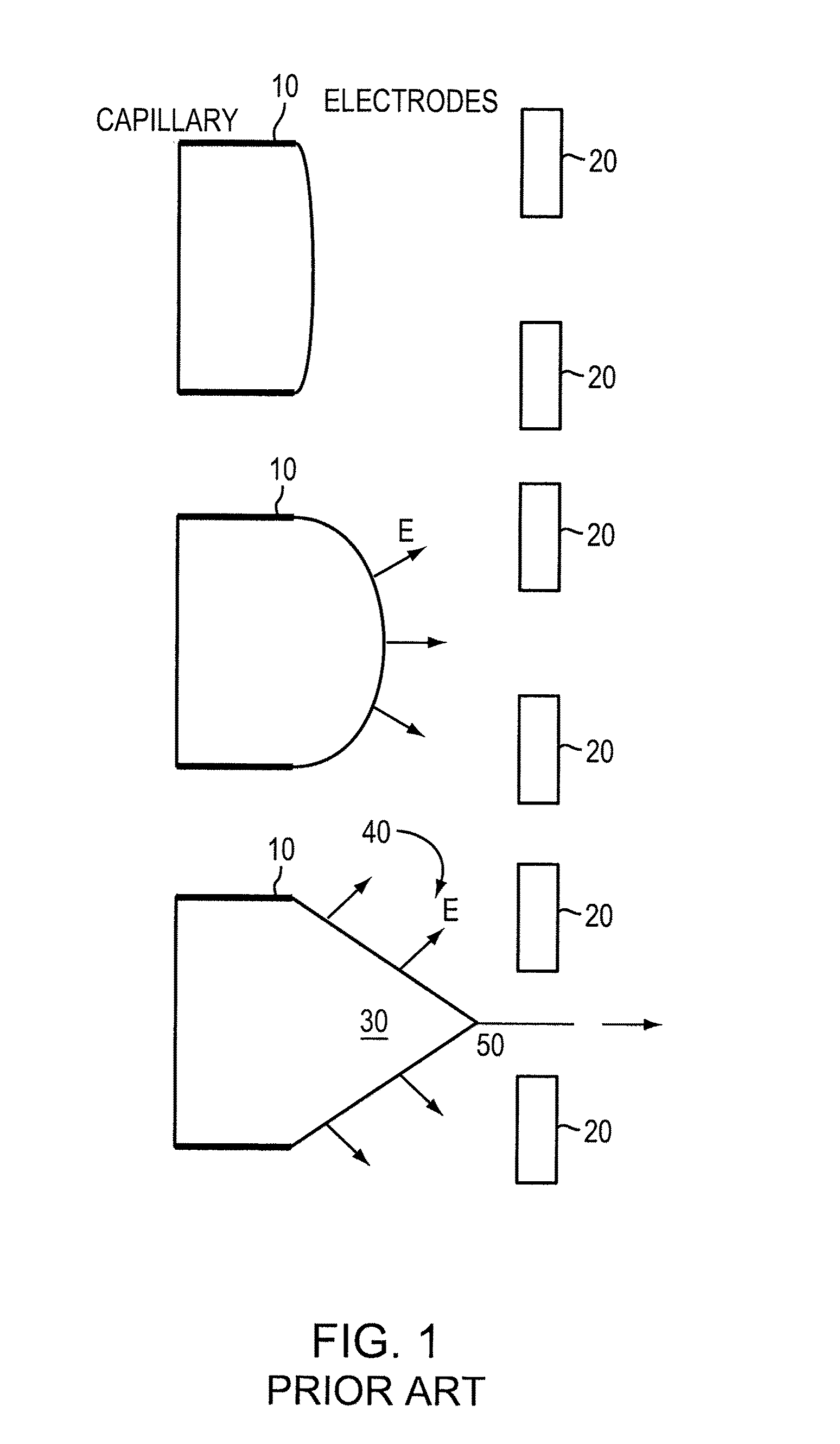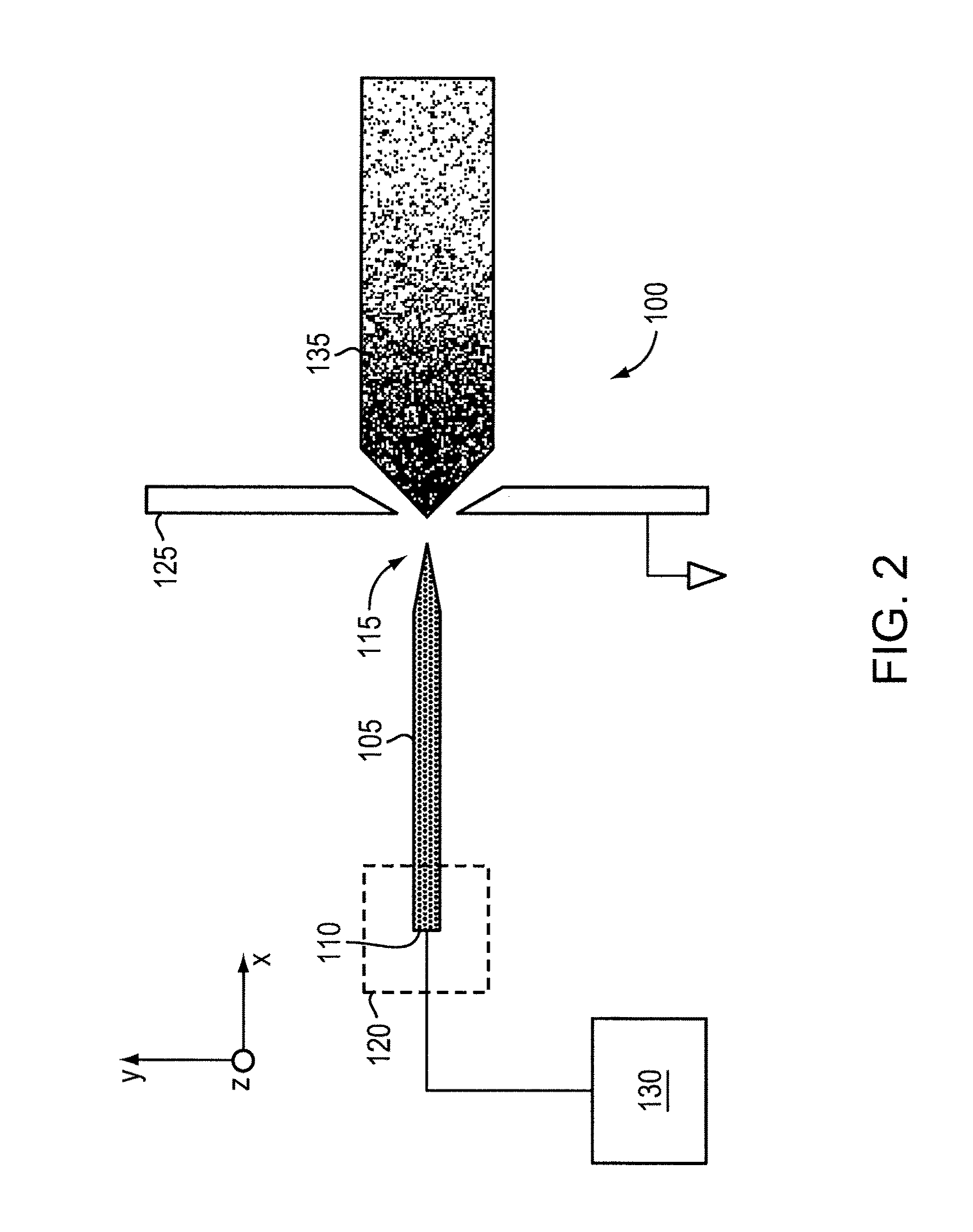Method and apparatus for a porous electrospray emitter
- Summary
- Abstract
- Description
- Claims
- Application Information
AI Technical Summary
Benefits of technology
Problems solved by technology
Method used
Image
Examples
Embodiment Construction
[0056]FIG. 2 is a schematic of an ion source 100, according to an illustrative embodiment of the invention. The ion source 100 includes a body 105 (e.g., an emitter body) that includes a base 110 and a tip 115. The body 105 can be made of a porous metal (e.g., a microfabricated emitter body formed from a porous metal substrate) compatible with an ionic liquid or a room temperature molten salt (e.g., does not react or result in electrochemical decaying or corrosion). The body 105 can be mounted relative to a source 120 of ionic liquid or a source of a room temperature molten salt. The body 105 includes a pore size gradient that decreases from the base 110 of the body 105 to the tip 115 of the body 105, such that ionic liquid can be transported through capillarity (e.g., through capillary forces) from the base 110 to the tip 115. The ionic liquid can be continuously transported through capillarity from the base 110 to the tip 115 so that the ion source 100 (e.g., emitter) avoids liqui...
PUM
| Property | Measurement | Unit |
|---|---|---|
| Length | aaaaa | aaaaa |
| Radius | aaaaa | aaaaa |
| Temperature | aaaaa | aaaaa |
Abstract
Description
Claims
Application Information
 Login to View More
Login to View More - R&D
- Intellectual Property
- Life Sciences
- Materials
- Tech Scout
- Unparalleled Data Quality
- Higher Quality Content
- 60% Fewer Hallucinations
Browse by: Latest US Patents, China's latest patents, Technical Efficacy Thesaurus, Application Domain, Technology Topic, Popular Technical Reports.
© 2025 PatSnap. All rights reserved.Legal|Privacy policy|Modern Slavery Act Transparency Statement|Sitemap|About US| Contact US: help@patsnap.com



